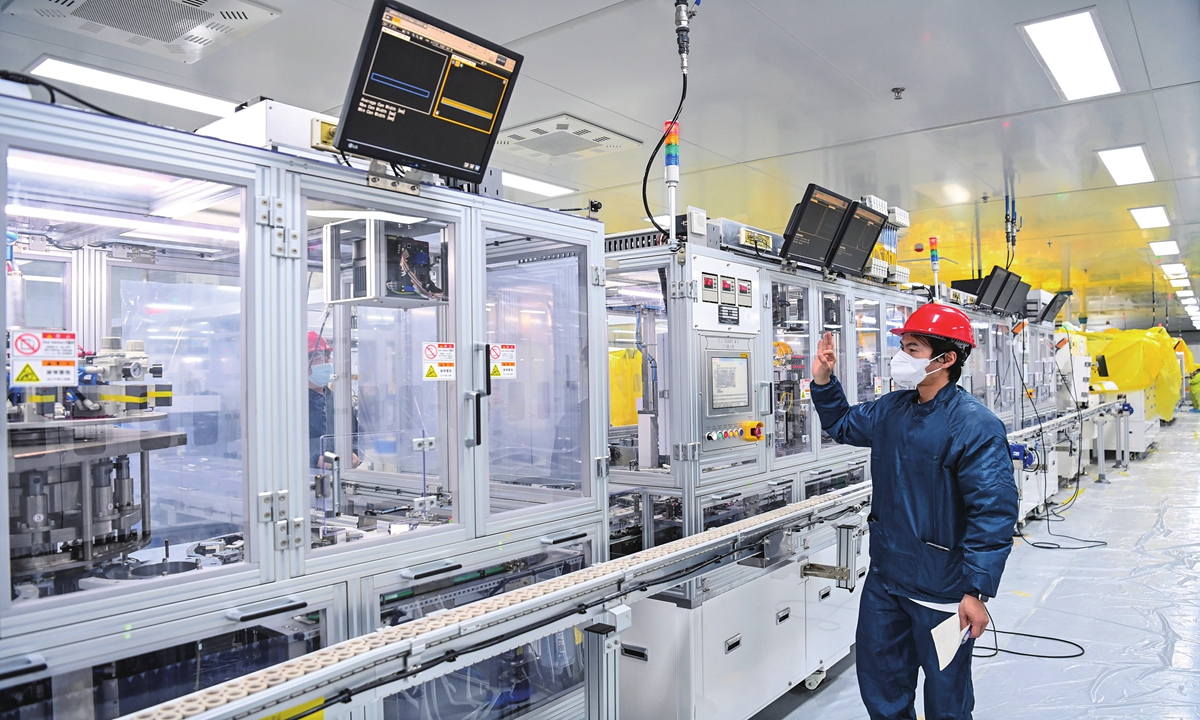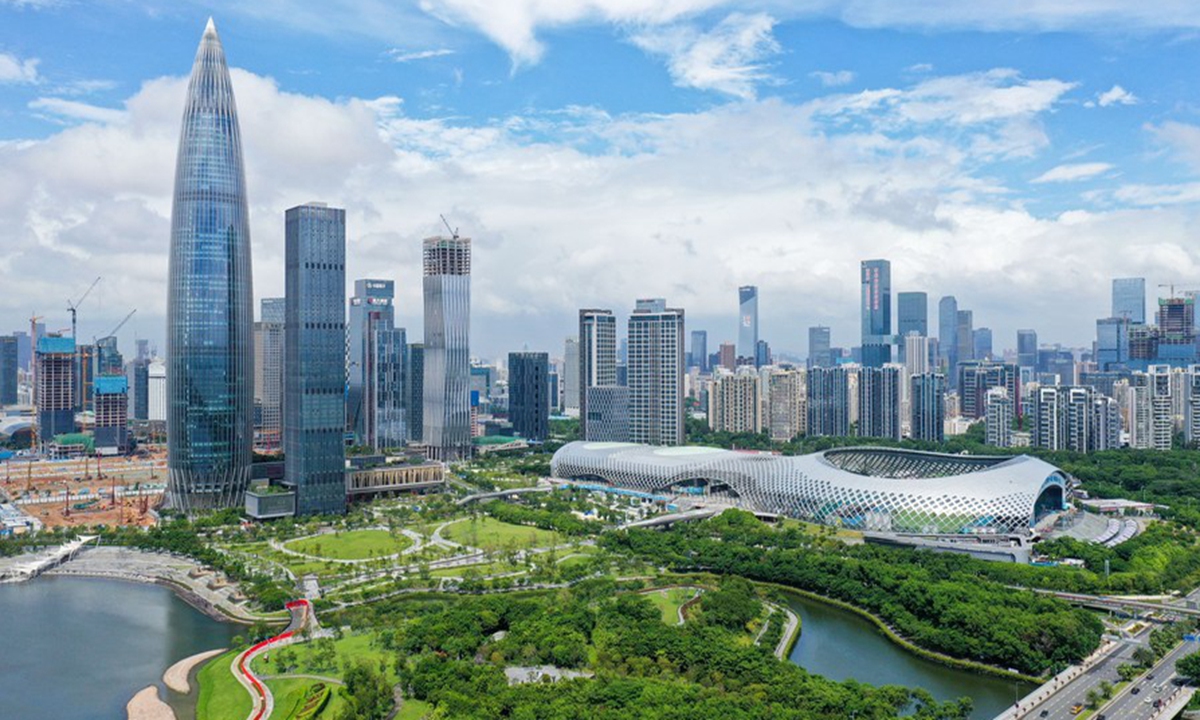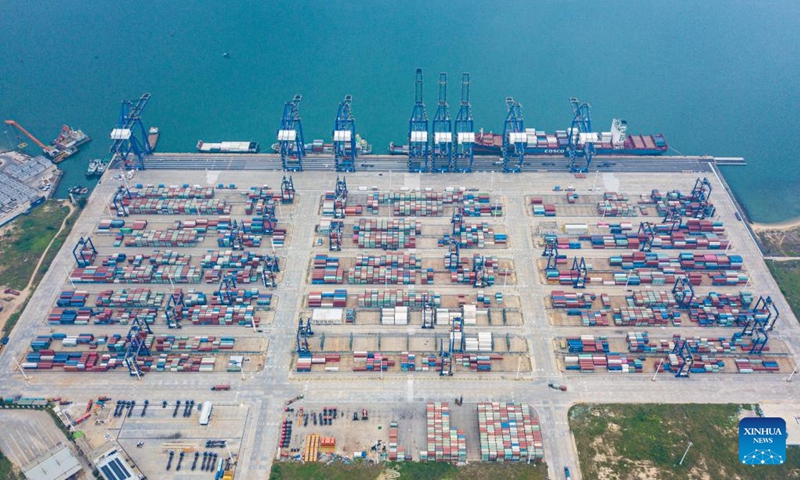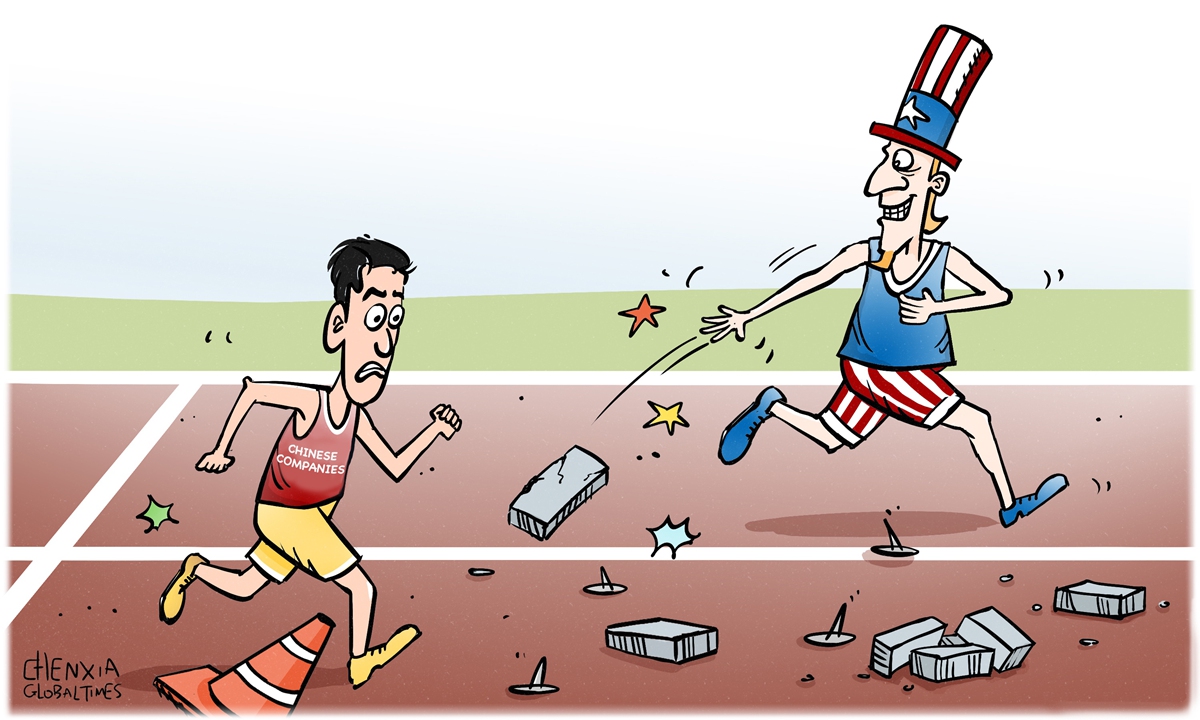

Technicians test lithium-ion battery production equipment at a factory in Jinhua, East China's Zhejiang Province. Photo: VCG
The US government announced new protectionist tariffs last week, targeting Chinese electric vehicles (EVs) and other high-tech products.Wielding the stick of tariffs against China's competitive industries is the latest move in the US' recent "overcapacity" offensive against China. In essence, it is still implementing trade protectionism, undermining WTO rules, and suppressing the Chinese economy. However, the US' accusation of Chinese industrial "overcapacity" is a false proposition, as the competitiveness of Chinese products relies on homegrown innovation.
This so-called overcapacity rhetoric reflects the increasing anxiety of the US, seeing the rapid development of China's new-energy sector. The narrative is a way to shift blame for their own backwardness in related industries, and also a tactic to curb China's technological progress and industrial development.
The competitiveness of China's "new three items" in the international market comes from the continuous technological innovation of China's new-energy industry, efficient production and complete supply chain, and high labor productivity. The market economy is a process of continuous balance between supply and demand.
It is against basic economic principles to accuse Chinese industrial competitiveness as "dumping" and "overcapacity." In the face of the US' suppression, China should promote stability through progress, establish the new before abolish the old. China is on track to become a global leader in innovation.
The Chinese automotive industry's "going global" strategy has surpassed expectations, but there is still much more potential for growth in the future. Foreign consumers recognize Chinese products mainly because the country has done relatively well in addressing climate change, green transition, and low-carbon initiatives.
As long as China unleashes the huge potential of its colossal market, the innovative potential of the Chinese automotive industry, and the advantages of institutional openness in China, the Chinese automotive industry will lead the global automotive market in the coming many years.
China's PMI in April showed that the recovery of small and medium-sized manufacturing enterprises is gaining pace, demonstrating that the endogenous driving force of China's economy continues to strengthen, and the quality of development of small and medium-sized enterprises continues to improve.
Small and medium-sized enterprises account for the vast majority of the total number of enterprises globally, and the same is true in China. If small and medium-sized technology enterprises can make a greater contribution in technological innovation, they will become the core competitiveness of the economy of a country.
There are three core elements for enterprises to create new quality productive forces: First, innovation. Without innovation, small and medium-sized technology companies will be hard to succeed. Second, innovation should be groundbreaking, original, and fundamental. Third, the most important aspect of developing new quality productive forces is to achieve the optimal allocation of all production factors.
As a global manufacturing powerhouse, China has the most complete industrial system, the most comprehensive categories, and a mature upstream and downstream supply chain. To take it to the next level on the existing foundation, China needs to combine digital economy with existing traditional manufacturing enterprises to create new industries, new formats, and new models.
Currently, it is a very important moment for the transformation and upgrade of China's manufacturing industry. There are two key points that are very important: First, the development of industrial internet. Second, the promotion of smart manufacturing. The combination of digital technology and contemporary industrial development is urgent, and digital technology should be used to promote the matching of supply and demand, especially by leveraging artificial intelligence and big data analysis to improve the alignment of consumer preferences and the flexible production capabilities of enterprises, and to build a digital technology-supported manufacturing industry chain, supply chain, and the complete value chain.
Developing future industries, the key lies in the country's talent pool. This is where China lags behind some of the world's developed economies. China has a large pool of skilled workers, but researchers have low enthusiasm for industrialization, and a large number of research results are still "sleeping" in the laboratory.
To develop future industries, China should continue to respect intellectual property rights, accelerate the reform of incentives for intellectual property rights, and promote scientific research innovation and results transformation. While introducing international talent, China should ramp up efforts in cultivating talent, strengthen basic education, foster innovation awareness, establish a trial and error mechanism, incentivize research talent to innovate, and cultivate local talent through practice.
And, China needs to accelerate the reform in key areas and key links such as talent training, evaluation, personnel mobility, and incentive system, injecting strong momentum into talent development.
The author is a former Chinese vice minister of commerce and executive deputy director of the China Center for International Economic Exchanges. bizopinion@globaltimes.com.cn



